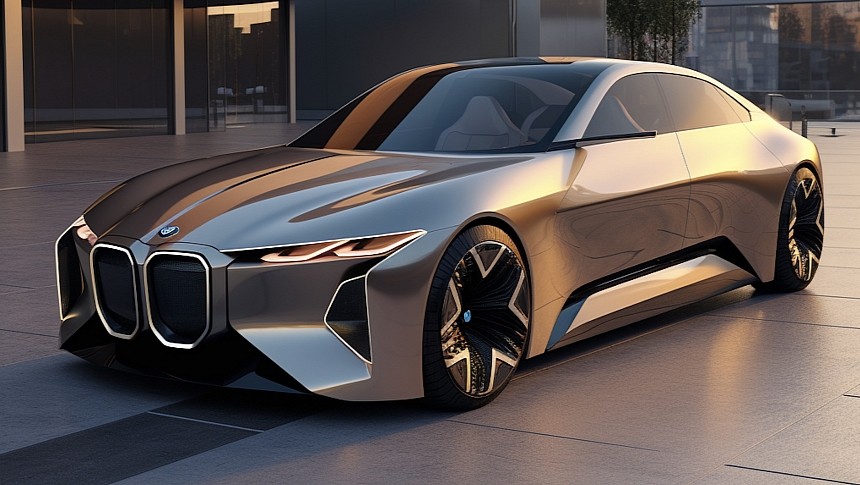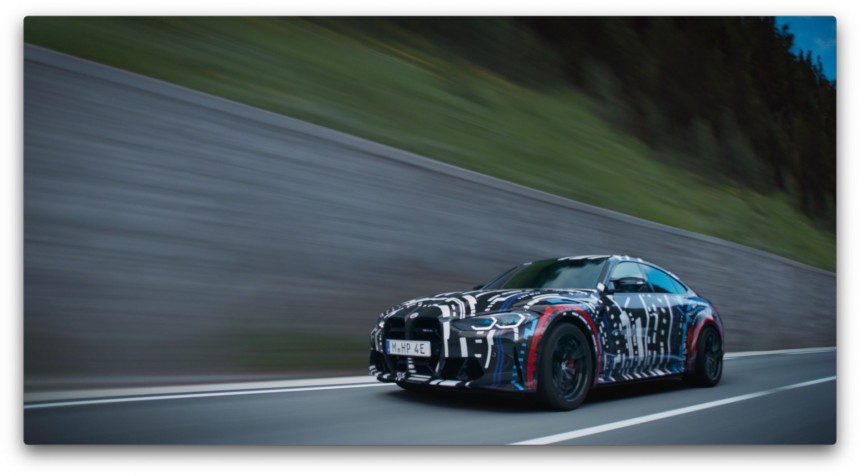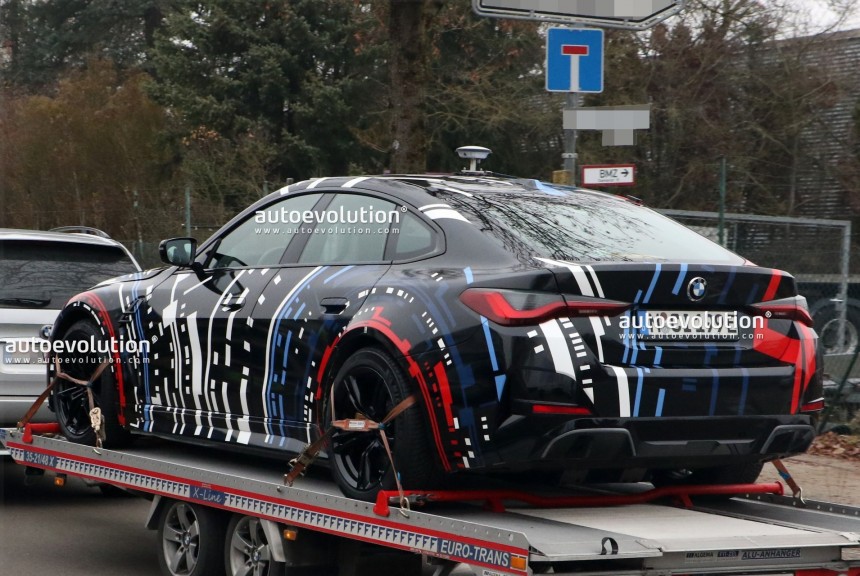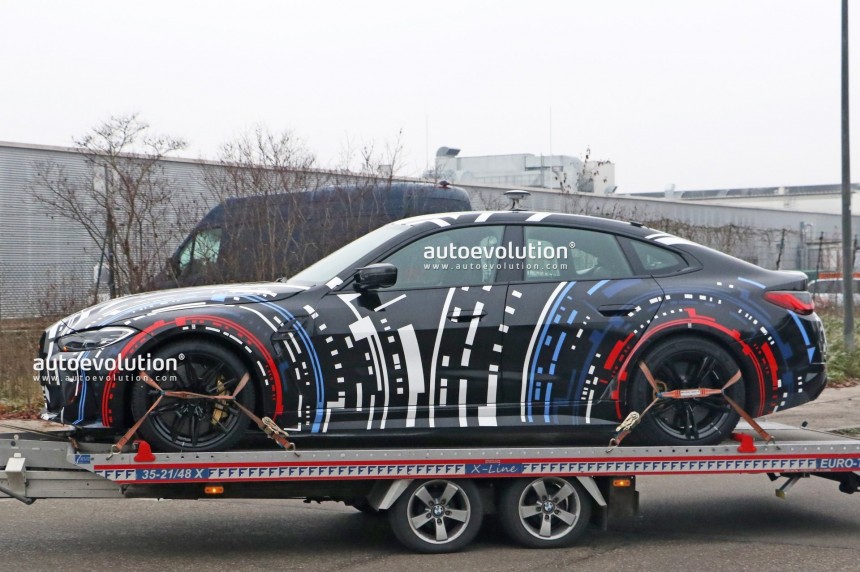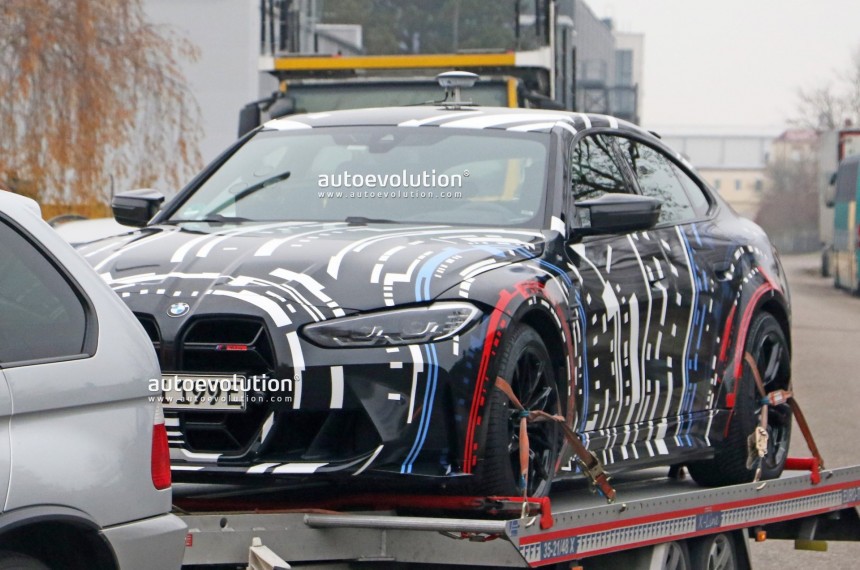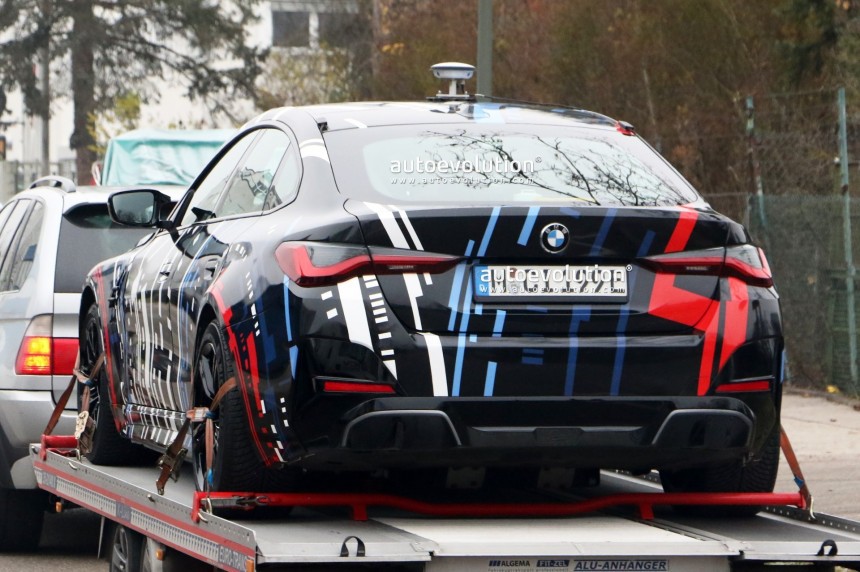Hello, and welcome to the future! We are now precisely a quarter of a century from the introduction of the first - and until recently only - car to be solely developed by BMW M.
A time traveler from the late 1970s would probably have a hard time picking up his jaw from the ground after taking a brief look at the BMW XM, the M1's successor. I say this because nobody would have expected such an abrupt evolution for the Motorsport GmbH division over the last decades, just like Monty Python's Spanish Inquisition sketch.
While the M1 started off as a collaboration with Lamborghini and was mid-engine with two seats, so it was a proper supercar, the XM is a 2.8-ton, gargantuan SUV with five seats, AWD, and a plug-in hybrid powertrain configuration. Despite both cars being exclusive to the coveted M designation, they're not exactly like two peas in a pod, are they?
Fast forward to around 2026, when the M lineage should welcome its third model, and that '70s time traveler might need an entire school of thought overhaul or a rewiring of his brain a la Total Recall. That is when BMW M expects to start selling its first-ever electric-only model, a prototype of which has already begun public testing. Some may say this isn't exactly news, as a press release accompanied a photo of a camouflaged prototype as early as August 2022. That said, a lot more information has transpired about the future model since then.
In the mean time, the Bavarians have already revealed several M-badged EVs across the entire lineup, but those are so-called M-Performance models. I'm talking about a thoroughbred M car with zero emissions here, the first of its kind and quite a few years away.
Munich's M skunkworks team is hard at work preparing a total switch from dinosaur to battery juice for the entire range by the end of the decade, pun intended, and the first fruit of that labor is something never before seen in the carmaker's history.
At least when it comes to cars, many good things come in fours - from wheels to passenger seats and even turbochargers. BMW is no stranger to quad-turbocharged engines, as it used to be the only carmaker to offer a diesel with four turbos until 2020.
Well, since diesels are internal combustion engines (ICE) and the Bavarian carmaker is slowly phasing them out in the next decade, it has now decided to keep the 'four' moniker for EVs. Frank van Meel, the CEO of BMW's performance arm, announced that electric sports cars are "unavoidable" as early as 2017.
Yes, BMW M's next project is an electric sports car with four motors, twice as many as all current EVs, except the Rivian R1S. Heck, even the Tesla Model S Plaid has to make do with just three motors, and the only other quad-motor EV expected in the next couple of years is the Mercedes-Benz EQG, a hardcore off-roader.
Based on a brand-new, EV-only architecture with a skateboard design derived from the 'New Class' platform, the yet-unnamed BMW M model is expected to be unveiled by the end of 2025 at the earliest, most likely as a MY2026.
For the past year or so, it has been repeatedly spotted in early development prototype form, based on the highly modified bodyshell of a BMW i4 M50, a model itself based on the 4 Series GranCoupe. With that in mind, don't expect the production model to carry over anything from the i4 or 4 Series apart from the overall size.
Tesla's Model S Plaid is currently the quickest accelerating 'mainstream' electric car on the planet, not including specialty exotics like the record-breaking Rimac Nevera and other electric hypercars.
Using 'just' three electric motors, one on the front and two on the rear axle, the Plaid delivers up to 1,019 horsepower (1,033 PS) and 1,050 lb-ft (1,420 Nm) of torque. Those numbers are enough to propel the 4,960 lbs (2,250 kg) sedan from 0 to 100 kph (62 mph) in just over 2 seconds, taking a huge chunk of energy from an easily overheating 100 kWh battery.
You could say that the Tesla is firmly in BMW M's sights with its future model, but you would be wrong. I say this because the Model S Plaid, like almost any other powerful EV nowadays, is not exactly a driver's car and has utterly different driving attributes compared to a lighter, less torquey, ICE-powered sports car. No, M GmbH might be gunning for the upcoming Porsche Taycan Turbo GT, another German EV sedan expected to exceed the 1,000 horsepower mark when it goes on sale next year.
It's too early to conclude or even speculate what type of electric motors the BMW M EV will have, whether they are innovative wheel-hub motors or the setup developed by Bosch, currently only used on the Rivian R1S.
In fact, the only official information about the upcoming model, apart from having four motors, is that it will be built on a brand new platform and have over 1,000 horsepower. That said, BMW insiders have also specified that the car's power simply results from having four relatively powerful motors. However, it was not a development requirement, nor will it be its 0-100 kph (62 mph) acceleration.
Unlike the Tesla Model S Plaid, M engineers want to make their cars usable on the road and track, so the four-motor setup is just a solution for delivering torque vectoring and unique driving attributes, not just more power.
Even so, a thousand horsepower is a thousand horsepower, so you can expect the new electric M model to offer ballistic acceleration figures at least on par, if not better than the Tesla Model S Plaid.
Another German carmaker's sports division currently working on a dedicated high-performance EV is Mercedes-AMG, whose introduction timeline is similar to the M model. The bad news for BMW is that AMG is working on axial flux motors for its future sports EV, but there are rumors about Mercedes making significant progress in bringing solid-state batteries to market by the end of this decade.
In translation, the yet-to-be-unveiled BMW M EV needs to have future-proof tech for the battery, as introducing four motors and a clever ECU to control everything and make the car fun to drive might not be enough.
As things are sitting right now, Munich is not exactly in a great place in this area. A notable enhancement in battery composition was achieved during the progression from the third generation of batteries in the now-defunct BMW i3 to the fifth-generation batteries found on current electric BMWs.
Specifically, the proportion of cobalt in the cathode was substantially reduced from a third to a mere 10 percent. Simultaneously, there was a marked increase in the nickel content, which surged to around 80 percent. These alterations, mainly aimed at improving the cells' energy density and lowering production costs, will continue this decade but must be made faster to compete with solid-state batteries, for example.
While the next generation of BMW li-ion batteries is expected to debut on the upcoming New Class models, a high-performance version should be reserved for the M model. Despite using somewhat traditional cell chemistry, the battery should offer rapid charge and discharge thanks to improved cooling and an 800V architecture. Expect a maximum of 100 kWh, though.
}
After officially admitting that work is being carried out to put the M-only EV in production in the next couple of years, BMW M's CEO has also let slip some of the hurdles in developing such a model.
On paper, an electric sports car with a motor powering each wheel is a no-brainer for driving dynamics, mainly thanks to the extra precision in power delivery that it should bring, not to mention true torque vectoring capabilities. In reality, BMW M's engineers started the development way earlier than is tradition for a brand-new model because they didn't want the car to alienate die-hard fans of the "most powerful single letter in the automotive world."
In short, it is almost effortless to make a powerful EV that can smoke hypercars in a straight line, as Tesla and even BMW have shown in the last couple of years. On the other hand, making an EV feel as connected to the driver and go as smoothly around a corner as an ICE-powered sports car is anything but easy.
A considerable part of the problem is the massive weight of electric motors and batteries, but almost equally important is the relationship between the driver's input and the vehicle's response to that input, which is a lot harder to control when there is more than one powertrain involved.
Oddly enough, BMW M's early solution to the "multiple-powertrains conundrum" was first developed for the BMW i8, a mid-engine plug-in hybrid with two transmissions and two powertrains. Essentially a dedicated ECU, the solution involves an extra central brain that can control longitudinal and lateral dynamics via electronic differentials, motors, and the vehicle's stability system.
Internally codenamed 'the Hand of God,' the unique ECU is being further developed for the next M sports car, which should be even trickier on account of having not two but four independent means of propulsion.
Since the BMW i8, a version of the system has been in charge of the dynamics of the all-wheel-drive M3, M4, and M5 models, making them feel more like the BMW sports cars of old around a corner. What makes it unique is that the Bavarians chose to develop everything in-house and not go to a supplier, so you can be sure that no matter the results, it will deliver a one-of-a-kind driving experience.
With that in mind, this is everything we know so far about the upcoming model:
While the M1 started off as a collaboration with Lamborghini and was mid-engine with two seats, so it was a proper supercar, the XM is a 2.8-ton, gargantuan SUV with five seats, AWD, and a plug-in hybrid powertrain configuration. Despite both cars being exclusive to the coveted M designation, they're not exactly like two peas in a pod, are they?
Fast forward to around 2026, when the M lineage should welcome its third model, and that '70s time traveler might need an entire school of thought overhaul or a rewiring of his brain a la Total Recall. That is when BMW M expects to start selling its first-ever electric-only model, a prototype of which has already begun public testing. Some may say this isn't exactly news, as a press release accompanied a photo of a camouflaged prototype as early as August 2022. That said, a lot more information has transpired about the future model since then.
In the mean time, the Bavarians have already revealed several M-badged EVs across the entire lineup, but those are so-called M-Performance models. I'm talking about a thoroughbred M car with zero emissions here, the first of its kind and quite a few years away.
Munich's M skunkworks team is hard at work preparing a total switch from dinosaur to battery juice for the entire range by the end of the decade, pun intended, and the first fruit of that labor is something never before seen in the carmaker's history.
Good Things Come in Fours
Well, since diesels are internal combustion engines (ICE) and the Bavarian carmaker is slowly phasing them out in the next decade, it has now decided to keep the 'four' moniker for EVs. Frank van Meel, the CEO of BMW's performance arm, announced that electric sports cars are "unavoidable" as early as 2017.
Yes, BMW M's next project is an electric sports car with four motors, twice as many as all current EVs, except the Rivian R1S. Heck, even the Tesla Model S Plaid has to make do with just three motors, and the only other quad-motor EV expected in the next couple of years is the Mercedes-Benz EQG, a hardcore off-roader.
Based on a brand-new, EV-only architecture with a skateboard design derived from the 'New Class' platform, the yet-unnamed BMW M model is expected to be unveiled by the end of 2025 at the earliest, most likely as a MY2026.
For the past year or so, it has been repeatedly spotted in early development prototype form, based on the highly modified bodyshell of a BMW i4 M50, a model itself based on the 4 Series GranCoupe. With that in mind, don't expect the production model to carry over anything from the i4 or 4 Series apart from the overall size.
Do Bavarians Wear Plaid?
Using 'just' three electric motors, one on the front and two on the rear axle, the Plaid delivers up to 1,019 horsepower (1,033 PS) and 1,050 lb-ft (1,420 Nm) of torque. Those numbers are enough to propel the 4,960 lbs (2,250 kg) sedan from 0 to 100 kph (62 mph) in just over 2 seconds, taking a huge chunk of energy from an easily overheating 100 kWh battery.
You could say that the Tesla is firmly in BMW M's sights with its future model, but you would be wrong. I say this because the Model S Plaid, like almost any other powerful EV nowadays, is not exactly a driver's car and has utterly different driving attributes compared to a lighter, less torquey, ICE-powered sports car. No, M GmbH might be gunning for the upcoming Porsche Taycan Turbo GT, another German EV sedan expected to exceed the 1,000 horsepower mark when it goes on sale next year.
It's too early to conclude or even speculate what type of electric motors the BMW M EV will have, whether they are innovative wheel-hub motors or the setup developed by Bosch, currently only used on the Rivian R1S.
In fact, the only official information about the upcoming model, apart from having four motors, is that it will be built on a brand new platform and have over 1,000 horsepower. That said, BMW insiders have also specified that the car's power simply results from having four relatively powerful motors. However, it was not a development requirement, nor will it be its 0-100 kph (62 mph) acceleration.
Unlike the Tesla Model S Plaid, M engineers want to make their cars usable on the road and track, so the four-motor setup is just a solution for delivering torque vectoring and unique driving attributes, not just more power.
Even so, a thousand horsepower is a thousand horsepower, so you can expect the new electric M model to offer ballistic acceleration figures at least on par, if not better than the Tesla Model S Plaid.
Battery Technology Is the Same but Different
In translation, the yet-to-be-unveiled BMW M EV needs to have future-proof tech for the battery, as introducing four motors and a clever ECU to control everything and make the car fun to drive might not be enough.
As things are sitting right now, Munich is not exactly in a great place in this area. A notable enhancement in battery composition was achieved during the progression from the third generation of batteries in the now-defunct BMW i3 to the fifth-generation batteries found on current electric BMWs.
Specifically, the proportion of cobalt in the cathode was substantially reduced from a third to a mere 10 percent. Simultaneously, there was a marked increase in the nickel content, which surged to around 80 percent. These alterations, mainly aimed at improving the cells' energy density and lowering production costs, will continue this decade but must be made faster to compete with solid-state batteries, for example.
While the next generation of BMW li-ion batteries is expected to debut on the upcoming New Class models, a high-performance version should be reserved for the M model. Despite using somewhat traditional cell chemistry, the battery should offer rapid charge and discharge thanks to improved cooling and an 800V architecture. Expect a maximum of 100 kWh, though.
Power Is Nothing Without Control
After officially admitting that work is being carried out to put the M-only EV in production in the next couple of years, BMW M's CEO has also let slip some of the hurdles in developing such a model.
On paper, an electric sports car with a motor powering each wheel is a no-brainer for driving dynamics, mainly thanks to the extra precision in power delivery that it should bring, not to mention true torque vectoring capabilities. In reality, BMW M's engineers started the development way earlier than is tradition for a brand-new model because they didn't want the car to alienate die-hard fans of the "most powerful single letter in the automotive world."
In short, it is almost effortless to make a powerful EV that can smoke hypercars in a straight line, as Tesla and even BMW have shown in the last couple of years. On the other hand, making an EV feel as connected to the driver and go as smoothly around a corner as an ICE-powered sports car is anything but easy.
A considerable part of the problem is the massive weight of electric motors and batteries, but almost equally important is the relationship between the driver's input and the vehicle's response to that input, which is a lot harder to control when there is more than one powertrain involved.
Oddly enough, BMW M's early solution to the "multiple-powertrains conundrum" was first developed for the BMW i8, a mid-engine plug-in hybrid with two transmissions and two powertrains. Essentially a dedicated ECU, the solution involves an extra central brain that can control longitudinal and lateral dynamics via electronic differentials, motors, and the vehicle's stability system.
Internally codenamed 'the Hand of God,' the unique ECU is being further developed for the next M sports car, which should be even trickier on account of having not two but four independent means of propulsion.
Since the BMW i8, a version of the system has been in charge of the dynamics of the all-wheel-drive M3, M4, and M5 models, making them feel more like the BMW sports cars of old around a corner. What makes it unique is that the Bavarians chose to develop everything in-house and not go to a supplier, so you can be sure that no matter the results, it will deliver a one-of-a-kind driving experience.
